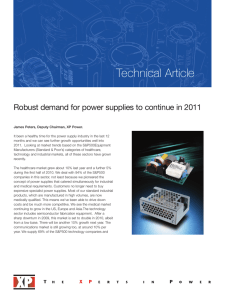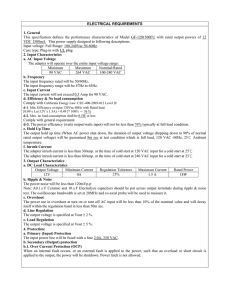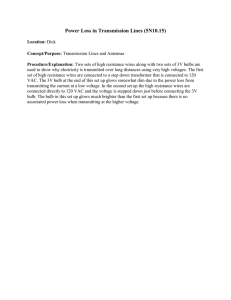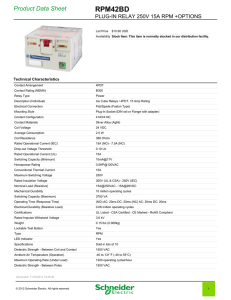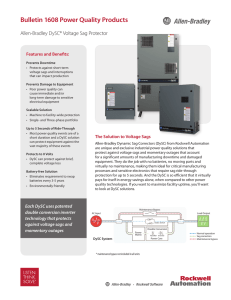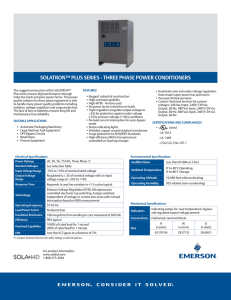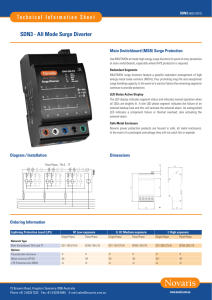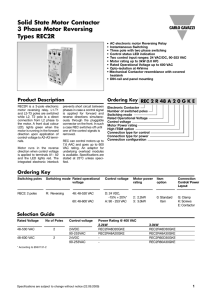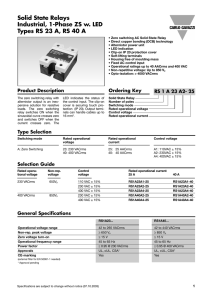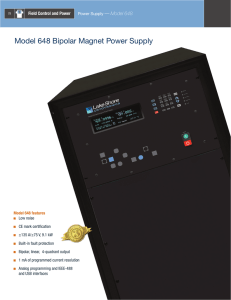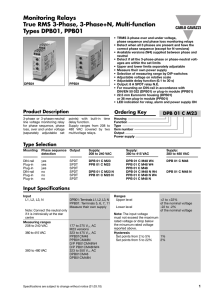Understanding AC/DC power supply efficiency
advertisement
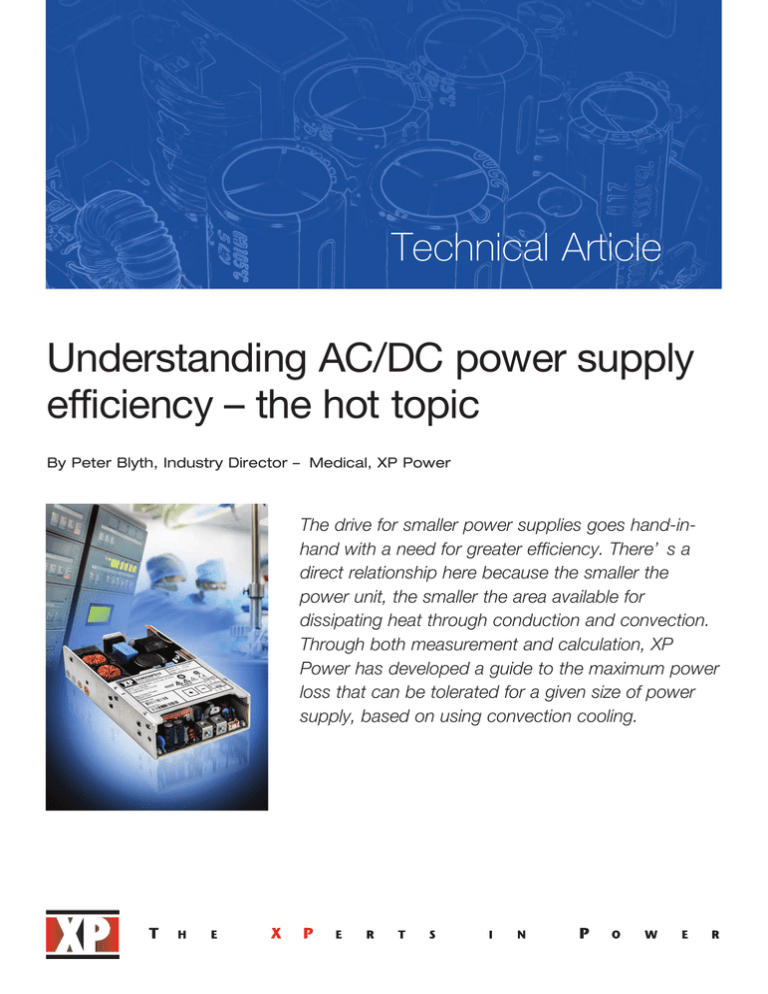
Technical Article Understanding AC/DC power supply efficiency – the hot topic By Peter Blyth, Industry Director – Medical, XP Power The drive for smaller power supplies goes handin hand with a need for greater efficiency. There’ s a direct relationship here because the smaller the power unit, the smaller the area available for dissipating heat through conduction and convection. Through both measurement and calculation, XP Power has developed a guide to the maximum power loss that can be tolerated for a given size of power supply, based on using convection cooling. xppower.com This is the loss that keeps all components in the unit operating within their temperature ratings. Figure 1 shows the results. Of course, forced-air cooling can have a big impact on these figures – in some cases a doubling of the power rating is claimed on data sheets. However, in many applications, forced-air cooling is to be avoided, not least because adding a fan to a power supply inevitably decreases its reliability, adds cost, creates noise, and introduces a maintenance headache. Figure 1: The maximum safe heat dissipation vs. size for AC/DC power supplies Based on Figure 1, it’s possible to calculate the minimum acceptable efficiency for a power supply of a given size. For example, if a unit with a footprint of 3 x 5 inches can dissipate 18 W, a 100 W power supply of this size will need to be at least 82% efficient - 18% wasted power translates as 18 W. Your conclusion might be that any 82% efficient power supply would do the job, but it’s not so simple. Efficiency figures are calculated in different ways, and how efficiency is stated will vary between data sheets. There can be a lot of specmanship going on here. This is hardly surprising, as you would expect any power supply manufacturer to put forward the best case for choosing their product. The most important thing to remember is that efficiency is affected by the way in which the product is operated and the environment in which it finds itself. The efficiency figure claimed on the power supply data sheet may have been calculated, or measured, under circumstances that were very different from those in which you want to use the unit. Many notable regulatory bodies and trade organizations have tried to establish international standards for the way in which efficiency is calculated and stated on product data sheets. An agreed standard has yet to be arrived at. 2 xppower.com As a result, power supply efficiency is usually specified based on the operating conditions that are most favourable to the figure concerned, for example, at maximum rated load. Whilst economic necessity will mean that you are unlikely to specify a power supply rated at much more power than you need, it could be that the maximum rating is only needed for a relatively small proportion of the unit’s operating time in your application. For the rest of the time, it will be operating below full load, and efficiency is likely to be much lower than the headline figure. To assess the impact on heat generation within your product, you’ll need to dig deeper into the data sheet and find the efficiency vs. load curve, if one is provided. Another important factor is the AC input voltage to the power supply. At the lowest acceptable AC input, often referred to as ‘low-line’, efficiency is likely to be appreciably lower than when the power supply is operating at it’s maximum rated input, or ‘high-line’. It is common for ‘universal AC input’ to mean a range of input voltages from 90 VAC to 230 VAC. As you can see from Figure 2, which shows variations in efficiency for a typical 140 W, 24 volt-output power supply with respect to load and input voltage, a power supply with a headline efficiency of 88% at highline and 140 W load, could be operating at just 84% when delivering the same power from a low-line input. The less impact that low input voltage has on overall efficiency, the easier it will be for you to calculate the likely efficiency and heat losses that need to be taken into account in a variety of operating environments. An example of a power supply that achieves almost a flat efficiency curve over its input range is XP Power’s CCM250. This 250 W AC/DC unit is rated up to 95% efficiency at 240 VAC input and 92% efficiency at 90 VAC input. Figure 2: Efficiency vs. load and AC input voltage for a typical 140W, 24V output AC/DC power supply The final point to be aware of is that for a given input voltage, the efficiency falls in line with output voltage. A shortform data sheet will often refer to a family of products with various DC output options. The headline efficiency figure of perhaps ‘88% typical’ may refer to a unit with 48 V DC output. If you are looking for the 5 V output model within the range, the efficiency is likely to be somewhat lower. Once again, digging deeper into the detailed data is essential to understand efficiency that’s likely to be encountered in your application. 3 --www.xppower.com North American HQ Asian HQ XP Power 990 Benecia Avenue, Sunnyvale, CA 94085 Phone : +1 (408) 732-7777 Fax : +1 (408) 732-2002 Email : nasales@xppower.com XP Power 401 Commonwealth Drive, Haw Par Technocentre, Lobby B, #02-02, Singapore 149598 Phone : +65 6411 6900 Fax : +65 6741 8730 Email : apsales@xppower.com Web : www.xppowerchina.com / www.xppower.com North American Sales Offices Toll Free.........................+1 (800) 253-0490 Central Region...............+1 (972) 578-1530 Eastern Region ............+1 (973) 658-8001 Western Region.............+1 (408) 732-7777 Asian Sales Offices Shanghai ....................... +86 21 51388389 Singapore.......................... +65 6411 6902 European HQ German HQ Distributors XP Power Horseshoe Park, Pangbourne, Berkshire, RG8 7JW, UK Phone : +44 (0)118 984 5515 Fax : +44 (0)118 984 3423 Email : eusales@xppower.com XP Power Auf der Höhe 2, D-28357 Bremen, Germany Phone : +49 (0)421 63 93 3 0 Fax : +49 (0)421 63 93 3 10 Email : desales@xppower.com Australia ..........................+61 2 9809 5022 Balkans ...........................+386 1 583 7930 Czech Rep. ...................+420 235 366 129 Czech Rep. ...................+420 539 050 630 Estonia ................................+372 6228866 Greece ..........................+30 210 240 1961 Israel ................................+972 9 7498777 Japan ..............................+81 48 864 7733 Korea ..............................+82 31 422 8882 Latvia ................................+371 67501005 Lithuania...........................+370 5 2652683 Poland..............................+48 22 8627500 Portugal..........................+34 93 263 33 54 Russia ...........................+7 (495)234 0636 Russia ...........................+7 (812)325 5115 South Africa.....................+27 11 453 1910 Spain..............................+34 93 263 33 54 Taiwan ..............................+886 3 3559642 Turkey ...........................+90 212 465 7199 European Sales Offices Austria ........................+41 (0)56 448 90 80 Belgium .....................+33 (0)1 45 12 31 15 Denmark ..........................+45 43 42 38 33 Finland........................+46 (0)8 555 367 01 France ......................+33 (0)1 45 12 31 15 Germany....................+49 (0)421 63 93 3 0 Italy ................................+39 039 2876027 Netherlands ...............+49 (0)421 63 93 3 0 Norway.............................+47 63 94 60 18 Sweden ..................... +46 (0)8 555 367 00 Switzerland ................ +41 (0)56 448 90 80 United Kingdom.........+44 (0)118 984 5515 Amtex Elbacomp Vums Powerprag Koala Elektronik Elgerta ADEM Electronics Appletec Bellnix Hanpower Caro Elgerta Gamma Venco Prosoft Gamma Vepac Venco Fullerton Power EMPA Global Catalog Distributors Americas ........................................Newark Europe & Asia...................................Farnell China ............................Premier Electronics newark.com farnell.com premierelectronics.com.cn Jan-10
